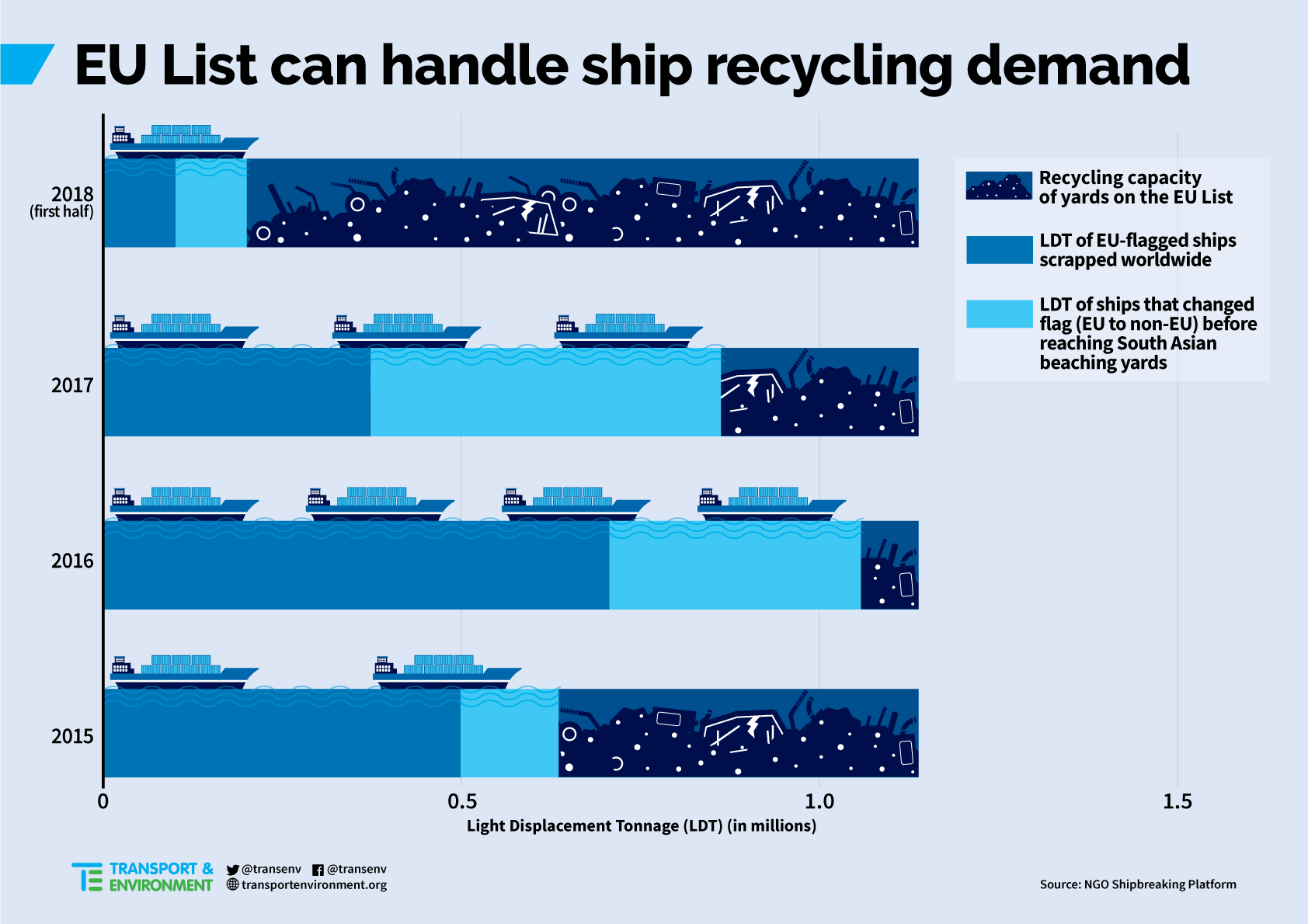
Interested in this kind of news?
Receive them directly in your inbox. Delivered once a week.
The 20 EU yards currently recognised as meeting ship-recycling standards have had the capacity to handle all EU ships broken since 2015, the report shows. Shipbreaking Platform and T&E said lawmakers should not succumb to pressure to either delay the implementation of the regulation or add sub-standard shipbreaking facilities – which would never be allowed to operate in EU countries – to the EU list.
Yards that use the beaching method are of particular concern. Vessels are full of hazardous materials, including asbestos, chlorine compounds, heavy metals and residue oils. On a tidal mudflat it is not possible to contain these toxics – instead they are washed out to the sea, and ravage coastal ecosystems. Without proper protective equipment, workers are also sickened and exposed to unnecessary risk. Accidents at the beaching yards kill or maim young men each year due to unsafe practices. [1]
Ingvild Jenssen, director of Shipbreaking Platform, said: “The shipowners’ capacity claims are a clear red herring. Alternatives to beaching end-of-life ships exist. It boils down to not accepting the low occupational safety and environmental protection standards that allow many unapproved yards to operate cheaply.”
Shipowners misleadingly cite the EU yards’ historical capacity to claim that they are over-capacity. However, this does not take into account the EU facilities operating under capacity due to being undercut by sub-standard competition overseas. It also ignores the capacity of newly-opened yards which are just starting to operate.
Lucy Gilliam, shipping officer at T&E, said: “The business of breaking EU ships is an opportunity to boost circular economy and create green jobs in Europe. EU-listed yards have the capacity to break all EU-flagged ships and more. There is no excuse for sending ships to dangerous and polluting yards on beaches overseas.”
The European Commission, national experts and stakeholders meet on 3 October to discuss the implementation of the regulation.
Note to editors:
[1] European Commission, Ship recycling: reducing human and environmental impacts, (2016).
Read more:
Report: EU-listed yards can handle the recycling demand of EU-flagged ships


